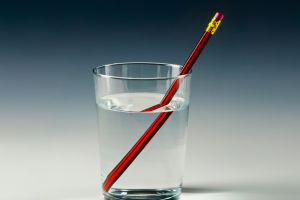Plastic Chokes Our Seas
Imagine swimming through crystal-clear ocean waters—only to find bits of plastic swirling around you. Sadly, this is the reality for much of marine life today. From microscopic plankton to majestic whales, no part of the ocean is untouched by plastic pollution.
We've all heard about the problem, but new research is revealing just how deep the damage goes. Let's explore how plastic affects marine creatures and ecosystems—and what practical steps we can take to help.
Where does all this plastic come from?
Plastic is everywhere—bags, bottles, packaging, microbeads. The problem? Much of it ends up in the ocean.
According to the United Nations Environment Programme, about 11 million metric tons of plastic enter the ocean each year. Most of it comes from land-based sources, washed into rivers and coastal waters.
Once in the sea, plastic breaks down into smaller fragments—microplastics—that are nearly impossible to clean up. These pieces can drift for decades, affecting life at every level of the food chain.
Entanglement: the visible tragedy
One of the most heartbreaking impacts is entanglement.
Marine animals can become trapped in discarded fishing nets, plastic strapping, and other debris. Seals, turtles, seabirds, and whales are common victims.
A 2021 study by the Commonwealth Scientific and Industrial Research Organisation (CSIRO) found that over 50% of sea turtle species are affected by entanglement, often leading to injury or death.
Dr. Denise Hardesty, a CSIRO scientist, explains that entanglement is one of the most visible forms of plastic's harm.
Ingestion: eating what isn't food
Many marine creatures mistake plastic for food.
Seabirds swallow plastic fragments, mistaking them for fish eggs. Turtles eat floating bags, thinking they're jellyfish. Even tiny zooplankton ingest microplastics, introducing plastic into the base of the food web.
The consequences are severe:
- Blocked digestive tracts
• False feelings of fullness, leading to starvation
• Internal injuries and chemical exposure
Professor Tamara Galloway, a marine ecotoxicologist, warns about plastic in the ocean, explaining it is not inert. And it attracts toxins, which then enter animals' bodies when ingested.
Microplastics: the invisible threat
Microplastics—tiny particles less than 5 mm in size—are now a pervasive threat.
They come from degraded plastic waste, synthetic textiles, car tires, and personal care products. Because they're so small, they pass easily through filters and into the ocean.
Studies show that microplastics are now found in marine sediments, surface waters, and even deep-sea trenches.
Fish, shellfish, and marine mammals are exposed to microplastics daily. The long-term effects are still being studied, but early research suggests links to inflammation, reproductive harm, and altered feeding behaviour.
Dr. Chelsea Rochman, an environmental scientist, cautions us about microplastics becoming a global issue, as they are small enough to infiltrate every part of the ecosystem.
Disrupting entire ecosystems
Plastic pollution doesn't just harm individual animals—it disrupts entire marine ecosystems.
Plastic waste can alter habitats, transport invasive species, and change community dynamics. Floating debris can create artificial surfaces where harmful algae and bacteria thrive.
Coral reefs are particularly vulnerable. A 2018 study in Science found that reefs in contact with plastic had an 89% higher risk of disease. Plastic creates wounds in coral tissue and provides surfaces for pathogens to colonise.
Dr. Joleah Lamb, lead author of the study, explains how plastic makes corals more susceptible to disease, threatening biodiversity hotspots that support countless marine species.
What we can do—turning knowledge into action
Facing this crisis can feel overwhelming—but every action counts.
- Reduce single-use plastics. Carry reusable bags, bottles, and containers. Avoid products with unnecessary plastic packaging.
- Support clean-up efforts. Beach clean-ups, river restoration projects, and global initiatives like The Ocean Cleanup are making an impact.
- Advocate for policy change. Support legislation that reduces plastic production, improves recycling, and holds producers accountable.
- Be an informed consumer. Choose products from companies committed to sustainable packaging and responsible sourcing.
Dr. Hardesty emphasises the importance of recycling; however, it will not help, that is why he refers to the need of a systematic change.
So Lykkers—how does this issue resonate with you? The story of plastic pollution is ultimately about connection. Our choices on land affect life in the sea.
Next time you reach for a plastic item, think of the turtle that might mistake it for food, or the coral that could suffer from its presence. Then ask: what can I do differently?
By staying informed, making mindful choices, and pushing for larger change, we can help ensure that future generations of marine life swim in oceans free from plastic's grip.
Together, we can turn the tide.
-
 Underwater RefractionDiscover how light bends underwater and how to capture perfect shots!
Underwater RefractionDiscover how light bends underwater and how to capture perfect shots! -
 Temperament Over TacticsYour Brain vs. Your Portfolio: Who's Really in Control?
Temperament Over TacticsYour Brain vs. Your Portfolio: Who's Really in Control? -
 Billund: Bricks & BeyondLEGOLAND, safaris, waterparks, and fjord trips—Billund's guide maps prices, timings, and routes for a family-first Jutland escape.
Billund: Bricks & BeyondLEGOLAND, safaris, waterparks, and fjord trips—Billund's guide maps prices, timings, and routes for a family-first Jutland escape.
Copyright © zogu 2021 - 2025. All Right Reserved.